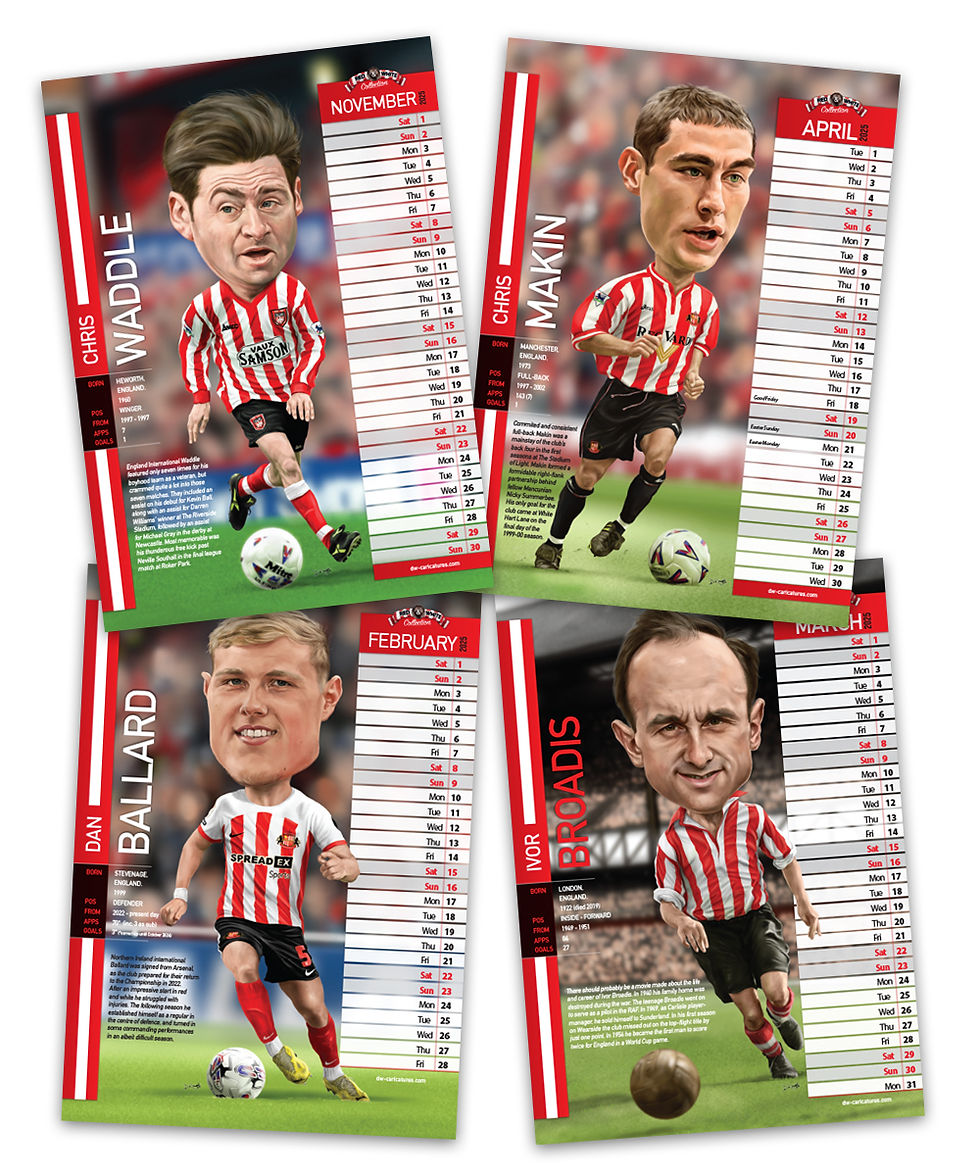
The following is an extract from Mark Metcalf's Charlie Hurley book, and is a tribute to how The King's goalscoring achievements helped earn him his nickname.
Following their first ever relegation from the top flight in 1957-58, Sunderland, managed by former Burnley boss Alan Brown, struggled to make an impact in Division Two and even flirted with relegation in 1959-60. However, as November 1960 came to a close a young side started to rise up the table. Key to the progress was record signing Charlie Hurley, who was not only a rock at the back but had incredible ball playing abilities. The Irish international was supreme in the air but no one had thought to use his talents in scoring situations and in his three years since signing from Millwall he had yet to score for the Roker Park side.
That was soon to change. He had almost done so in October in the 1-1 home draw with Rotherham when with Sunderland down to just nine men due to injuries he raced forty yards to meet Hooper’s corner and force a magnificent save from Roy Ironside in the Rotherham goal.
Outside right Harry Hooper had been signed from Birmingham City the previous September. Exceptionally quick with a strong shot, he made 80 first team appearances for Sunderland, scoring 19 times.
Charlie Hurley’s first goal for Sunderland should have then be awarded on the opening Saturday of December 1960 when Ipswich were beaten 2-0 at Roker Park and, as reported in the Sunderland Echo by Argus, Ipswich goalkeeper Roy Bailey “admitted that Hurley’s header from a corner from Jack Overfield had crossed the line but the referee didn’t see it.”
The Suffolk team were lying third behind Sheffield United and Liverpool but two goals from Willie McPheat, who had only just got into the team after signing for Sunderland the previous year, put Sunderland’s fortunes on the up. So, Hurley’s opening goal for Sunderland would have to wait – but not for long.
The decision to send Hurley up for corners was revolutionary when Sunderland tried it towards the end of 1960. Since Herbert Chapman’s decision to make the centre half a stopper they had remained firmly on the halfway line at set pieces no matter how good they were in the air.
It was this tactic which helped make Hurley so popular with Sunderland fans. After a while no corner at Roker Park would be complete without the cry of “Charlie, Charlie, Charlie” as the crowd roared the big man to get up into the opponents’ box to cause as many problems as possible.
“I was always good in the air. It was Stan Anderson’s idea. So, I went up for a corner and although I didn’t score it caused a lot of problems. The fact that I attacked the ball meant I got an awful lot of goals because we had some good crossers of the ball and Harry Hooper, George Mulhall and Nicky ‘the nicker’ Sharkey got on the end of some of my knock-downs.”
Anderson’s foresight changed the face of English football forever – now every team sends at least one of their centre backs forward for set pieces. Anderson says: “I thought that it was a natural thing for Charlie to do. He was a big fella, brilliant in the air. What else were we supposed to do with him? It was logic. It meant when he came up the other side had to say ‘Whoa, we’d better mark him, look at the size of him’. Normally the centre half marked the centre forward but when you had Charlie up there standing at the far post the centre half didn’t fancy going out there. The number of goals that Charlie scored, and the number of knock-downs that he allowed others to score was a very decent return.
“He was a magnificent header of the ball. It doesn’t take rocket science to think what I thought. Brownie never said a word against it. In fact, Brownie rarely spoke to me, except when he played hell with all of us. I said to Charlie at his seventieth birthday party that Brownie thought the world of him and to be fair Charlie was his best buy ever, so he should have.”
Charlie Hurley’s first goal for Sunderland was a belated Christmas present, delayed by just a day. It came on Boxing Day 1960 in a 1-1 draw with Sheffield United watched by 46,099 spectators. It was the first goal by a Sunderland centre half since Ray Daniel had scored at home to Sheffield Wednesday back on February 16th 1957. Daniel’s goal came from the penalty spot.
There was only a five-day wait for the next Hurley goal as he scored in the 7-1 win over Luton Town at Roker Park on December 31st.
Luton manager Sam Bartram, once a great goalkeeper who thus knew a thing or two about playing behind a centre half, wondered afterwards: “If John Charles is worth £60,000, how much is he worth? He’s the greatest in the business. I wish we had Hurley.”
The genial Irishman remembers: “I used to get more knackered going up for corners than playing back in defence. If we had ten or twelve corners in a game I had to get up and then get back. But the crowd wouldn’t have it any other way because if I stayed back, you’d hear ‘Charlie, Charlie’ and up I went... it was the number one thing that the fans loved.”
It was in the report of the Luton match that Charlie Hurley earned the nickname “King” for the first time. It was written by Vince Wilson in the Sunday Pictorial on New Year’s Day 1961. And it stuck.
Charlie Hurley was to score 26 goals for Sunderland in his 400 starts and 1 substitute appearances. Amongst his best were one of the three that beat League Champions Everton 3-1 in the 1964 FA Cup fifth round.




















































